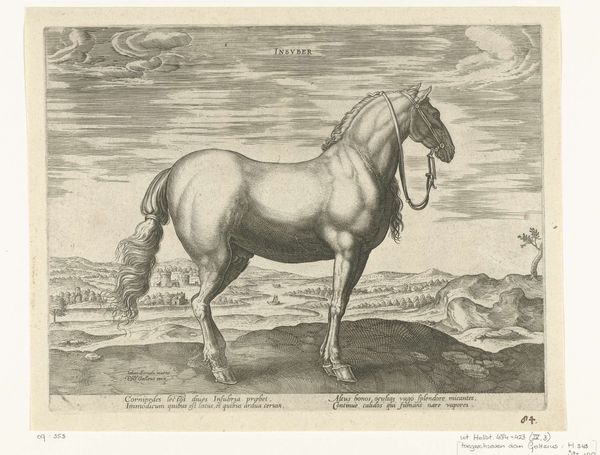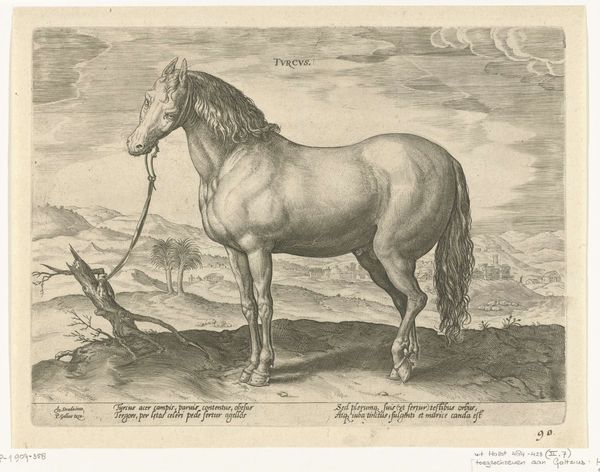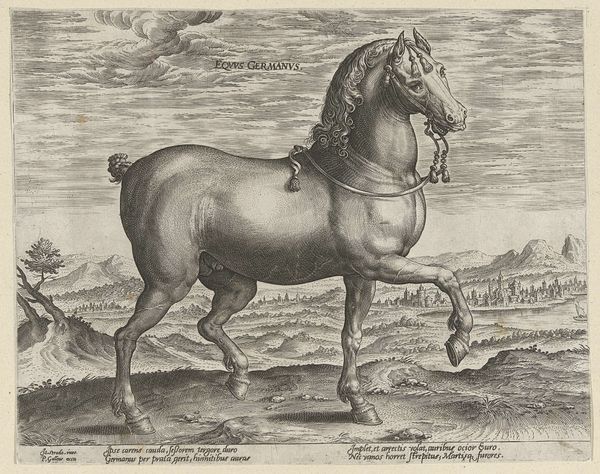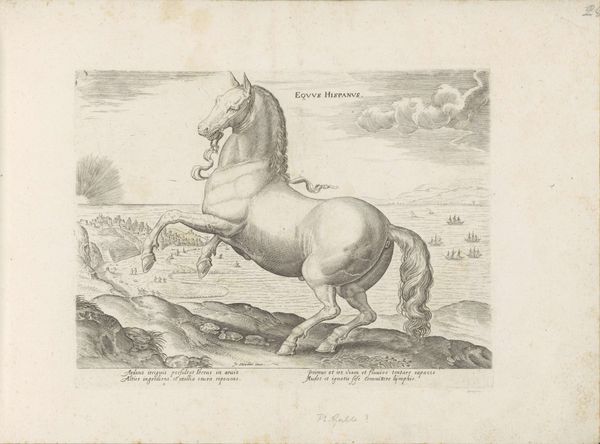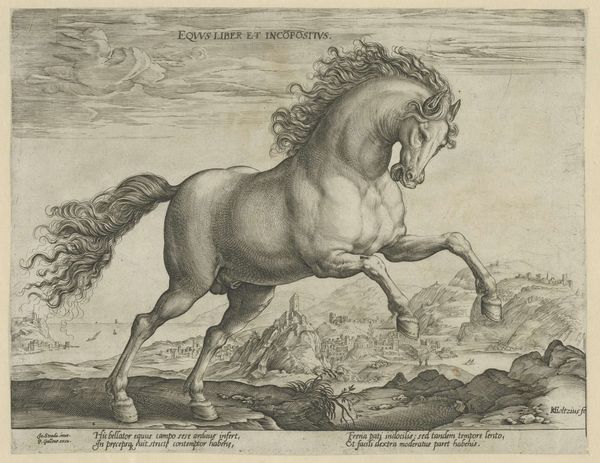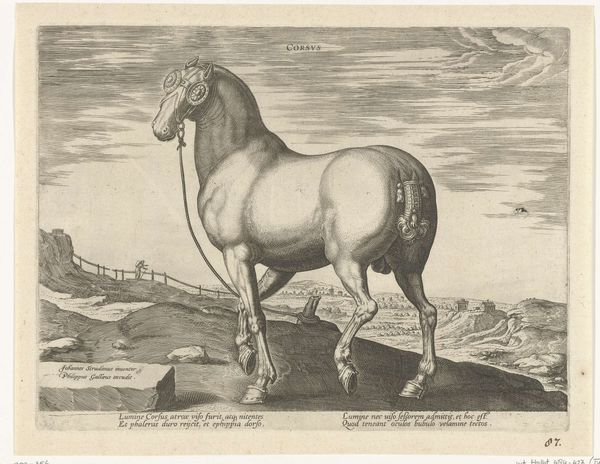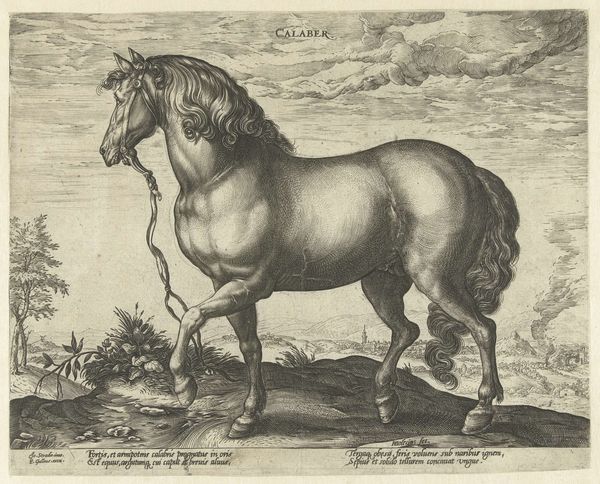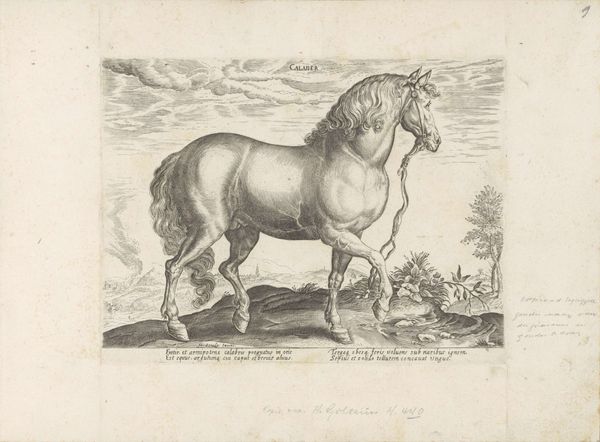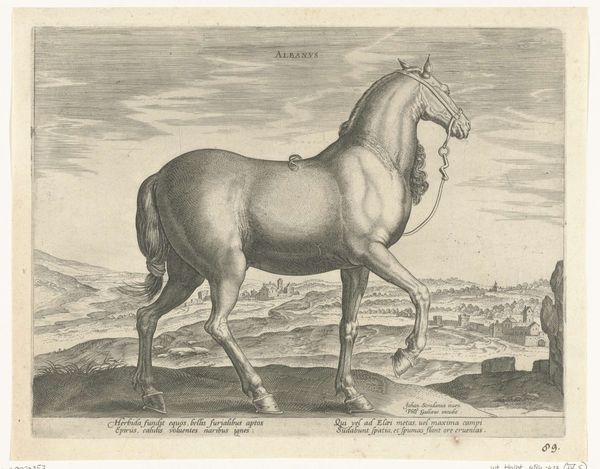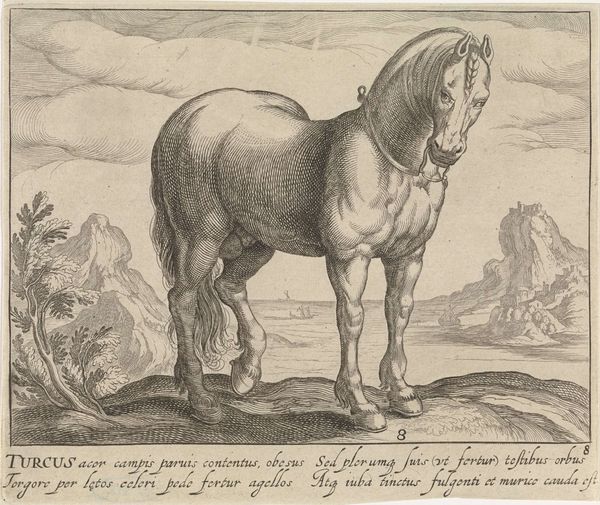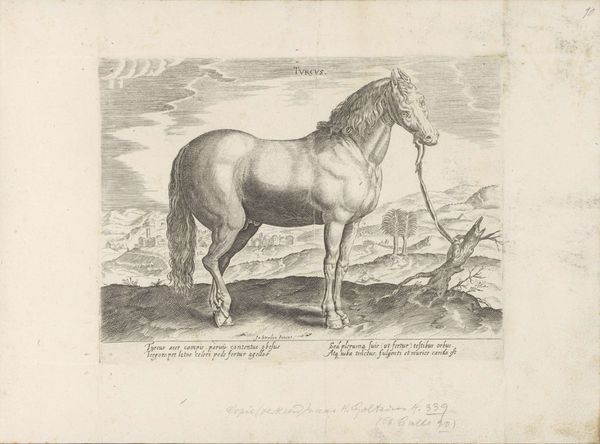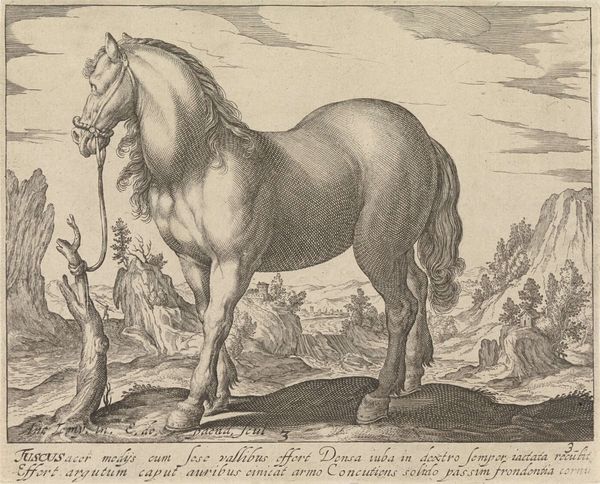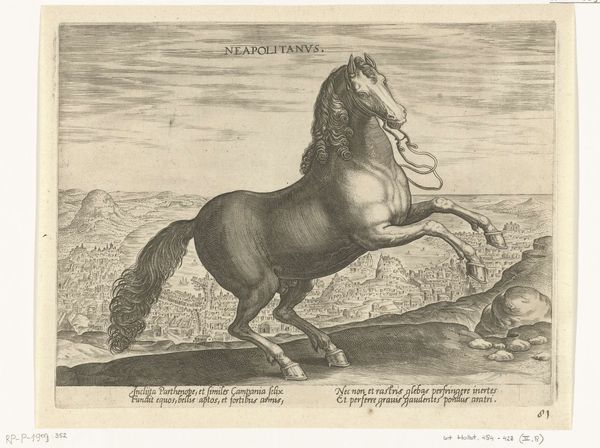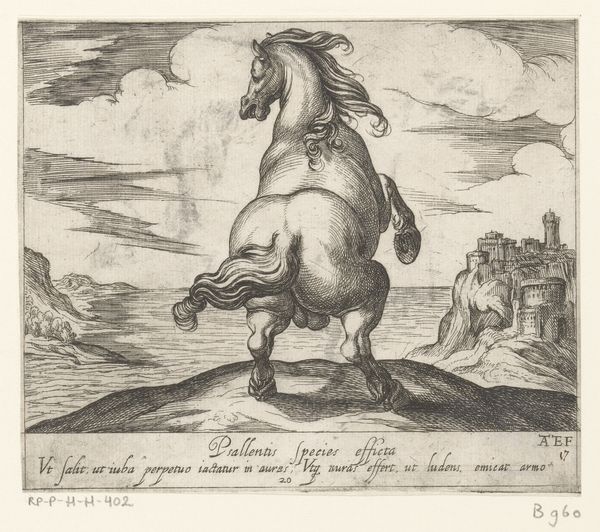
Dimensions: width 267 mm, height 206 mm
Copyright: Rijks Museum: Open Domain
Editor: We're looking at Hendrick Goltzius' "Paard uit Vlaanderen," an engraving from around 1578-1582. It depicts a horse in a landscape, and the horse appears quite proud and powerful. The landscape seems to frame and elevate the horse. What do you see in this piece? Curator: I see a powerful statement about the political and economic landscape of the Netherlands during that time. The horse isn't just an animal; it represents Flanders itself, a region known for its agriculture and, importantly, its wealth. Consider the inscription; it references Flanders' richness. The horse, then, becomes a symbol of regional power and prosperity. How do you think this image was intended to function publicly? Editor: Perhaps to inspire pride, or maybe as a symbol of strength that could be distributed and seen widely through prints? Curator: Precisely. Prints like this weren’t just aesthetic objects; they were powerful tools of representation and propaganda. The meticulous detail achieved through engraving elevates the animal, almost creating a portrait of the region. Think about the institutions that commissioned and circulated such prints, and how they played a role in shaping public perception of the region. How does the choice of portraying the region through an animal affect its meaning? Editor: By associating the region with an animal, it highlights certain qualities, such as strength and utility, making those ideas more concrete and perhaps easier to understand. Curator: Exactly. And considering the Northern Renaissance fascination with detail, it further emphasizes these qualities as inherently "Flemish". This print participates in constructing and disseminating an image of Flanders meant to project a specific kind of power. Editor: It's fascinating how much history is embedded in what initially looks like a simple depiction of a horse! Curator: Indeed. Art, especially publicly distributed art, rarely exists in a vacuum. By understanding its context, we can see how it shapes, and is shaped by, its world.
Comments
No comments
Be the first to comment and join the conversation on the ultimate creative platform.
